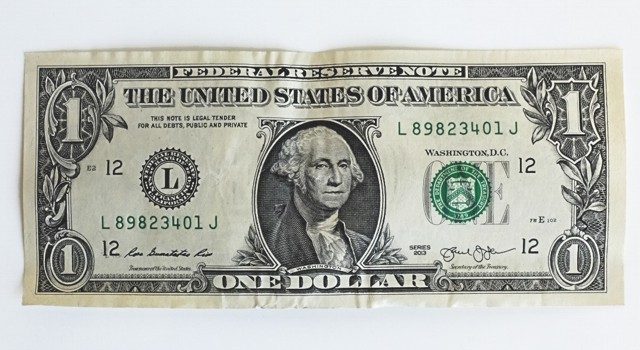 If you think hiding money under your mattress is a risk-free way of building wealth, think again. Cash, it turns out, has been the riskiest investment since 2002. Many investors try to avoid risk by putting their money in a bank account or investing in CDs. But like any other investment, cash is subject to its own set of risks.
If you think hiding money under your mattress is a risk-free way of building wealth, think again. Cash, it turns out, has been the riskiest investment since 2002. Many investors try to avoid risk by putting their money in a bank account or investing in CDs. But like any other investment, cash is subject to its own set of risks.
Cash is dangerous because the dollar can be devalued. When our currency decreases in value, we experience inflation and the purchasing power of the dollars we hold is compromised. Having the same amount of dollars doesn’t do you any good if your dollars won’t buy as much as they used to.
Since the beginning of 2002, the U.S. dollar has lost much of its purchasing power. From 2002-2007, the U.S. Dollar Index has dropped over 36% from 120 to 76.5. During that same period, the dollar has dropped over 39% against the Euro going from $0.88 to a Euro to $1.45. And the dollar has dropped over 64% against gold going from $280 to an ounce of gold to $795.
Money market’s real risk is the dropping value of the dollar, not exposure to subprime lending. Cash in money market has lost over 40% of its buying power since 2002. And the US Dollar has dropped 10% just this year alone.
Interestingly enough, the consumer price index (CPI) over this same period has only registered a 15% drop in the dollar’s purchasing power. While 15% is still significant, many economists believe that the federal government has been under reporting CPI since they changed the rules for computing it in 1996.
Purposefully under reporting CPI allows the government to cut the impact of cost of living increases in social programs and helps curb runaway government entitlement programs. Started under the Clinton administration and continued under Bush, these changes have rendered the official CPI numbers less meaningful.
Current CPI calculations have changed inflation numbers through tricks such as “substitutionary adjustments”, “component removal” and “hedonic deprecators”. This creative accounting rivals anything done by Enron. These changes were made specifically during a political debate over cutting back cost of living increases to Social security and other federal benefits. The changes have saved the Government tens of billions of dollars a year at the expense of benefit recipients whose benefits buy them much less now than they did a decade ago.
Any attentive consumer knows that cumulative price inflation since 2002 has been closer to 50% than 15%. This corresponds to the CPI being understated by about 5% a year. One study suggested that the CPI index has been understated by about 7% per year. No matter the exact amount, your bank deposits and money market funds have been the riskiest investments and have lost significant buying power to inflation. The danger of the U.S. dollar continuing to decline is aggravated if you try to be “safe” and over-expose your investments to cash and money market.
Just this year the dollar has continued its decline. Since the beginning of 2007, the U.S. Dollar Index has dropped 9% from 84.2 to 76.5. The dollar has dropped over 10% against the Euro going from $1.30 to a Euro to $1.45. And the dollar has dropped over 21% against gold going from $625 to an ounce of gold to $795.
Over half of your portfolio should be protected against the risk of a falling dollar. You can protect your portfolio against a falling dollar with investments in foreign bonds, foreign stocks, and hard asset stocks. Hard asset stocks are one of the best ways to protect yourself. As an asset class, they have also provided one of the best returns since 2002.
Hard asset investments include companies that own and produce an underlying natural resource. Examples of these natural resource stocks include companies that produce oil, natural gas, precious metals (particularly gold and silver), base metals such as copper and nickel, and other resources such as diamonds, coal, lumber, and even water.
Keep in mind that investing in hard asset stocks is not the same thing as investing directly in commodities. Buying gold bullion or a gold futures contract is an investment directly in raw commodities or their volatility. Commodities, as an asset class, generally maintain their buying power in dollar terms. Stocks, as an asset class, generally appreciate over inflation after dividends are factored in. For that reason, it may be to your benefit to invest in hard assets stocks which have an underlying commodity.
One index that tracks hard assets is the Goldman Sachs Natural Resources Index. This index is comprised of 70% energy and 11% materials. As of the end of October 2007, this index is up 34.00% year-to-date. Its three-year annualized return is 30.69% and its five-year annualized return is 30.43%.
And please don’t be fooled into thinking that cash in your mattress is a safe investment.